Seeing a puddle of oil around your pump is alarming. You worry it's a serious seal failure signaling costly repairs, but you don't know if it's a simple fix or a major issue.
What you see is often just heavy oil mist or spray, a symptom of operation, not a true leak. A real leak is a mechanical failure that drips oil when the pump is off. A methodical check of the oil level and exhaust filter will solve 90% of these "leaks."
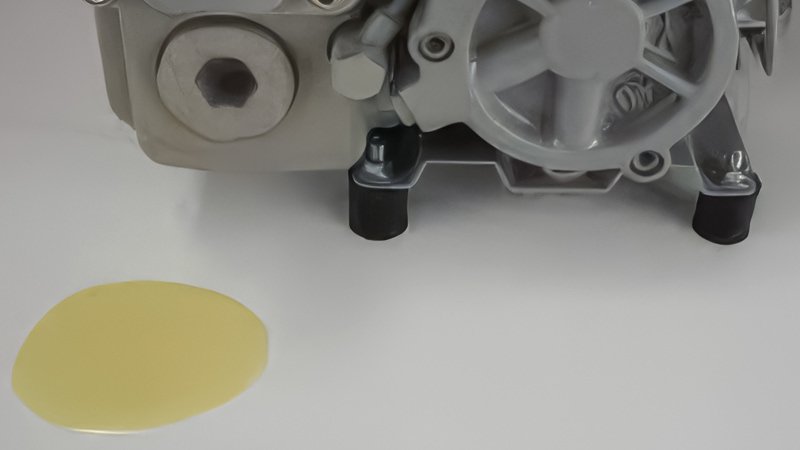
Having diagnosed hundreds of "leaking" pumps, I can tell you that the location of the oil is the most important clue. Oil appearing at the exhaust port is a dynamic issue that only happens when the pump is running. It's not a leak in the traditional sense. A true leak from a failed seal will drip oil from the pump body due to gravity, even when the power is off. Understanding this fundamental difference is the key to a fast and accurate diagnosis.
What is oil mist and why is it normal?
That smoky vapor coming from your pump's exhaust looks like a problem. You worry it could be a sign of internal damage, but it's often just part of the pump's design.
Oil mist is a fine aerosol of oil particles created when the pump compresses and expels air at high speed. This atomization is a normal byproduct of an oil-sealed rotary vane pump's operation. A functioning exhaust filter should capture most of it.

Think about what's happening inside the pump. Air is being compressed and forced out of a small port, creating immense turbulence within the internal oil bath. It's inevitable that this violent rush of exhaust gas will carry some microscopic oil droplets with it. This is precisely why these pumps are equipped with an exhaust mist filter (also called a demister or oil separator). Its entire job is to coalesce these tiny droplets and allow only clean air to exit. A very small amount of mist escaping is normal, but if that mist becomes a heavy spray or a puddle, you have a problem to investigate.
Why is my pump spraying oil from the exhaust?
You topped off the oil to be safe, but now the pump is making a mess. You think you did the right thing, but this simple action is the most common cause of the problem.
Overfilling is the number one cause of heavy oil spray from the exhaust. The excess oil has nowhere to go during compression and gets forcefully ejected with the exhaust air. Always fill the pump only to the center or max line on the sight glass.
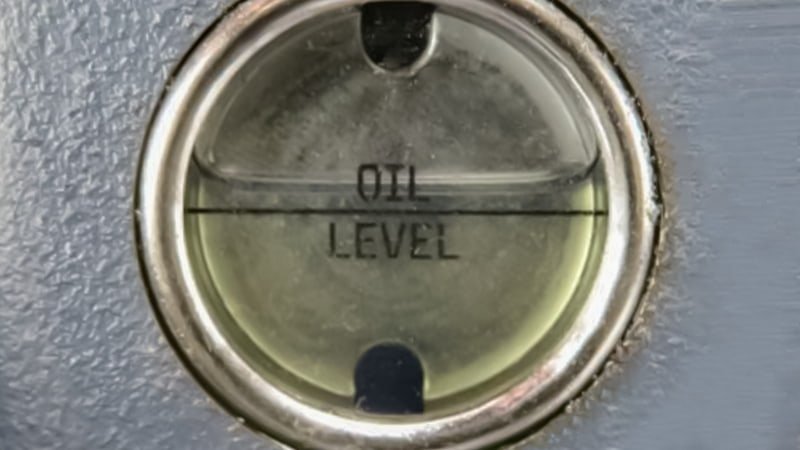
This is the very first thing I check when a client calls about oil from the exhaust. It’s an easy mistake to make. You look at the sight glass, see it’s a bit low, and dump some extra oil in for good measure. But the space inside a vacuum pump is precisely engineered. There needs to be a specific volume of empty space for the air compression to happen efficiently. When you add too much oil, you reduce that space. The pump then has to work much harder to expel both the air and the incompressible excess oil, resulting in a messy, forceful spray from the exhaust port.
Could a clogged exhaust filter be the problem?
You've confirmed the oil level is correct, but the pump is still making an oily mess. If the oil isn't the issue, the next logical step is to check the part that's supposed to contain it.
Yes, absolutely. A saturated exhaust filter cannot capture any more oil. Instead, the high-velocity exhaust air picks up the trapped oil and blows it out, creating a constant, heavy mist or drip from the exhaust port.
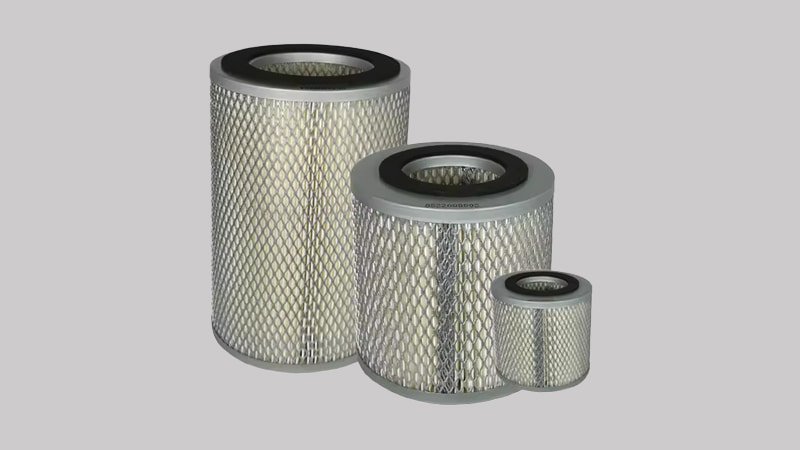
Think of your exhaust filter like a sponge. When it's new and dry, it can soak up a lot of liquid. But once it's completely saturated, any new liquid you pour on it will just run right off. The same thing happens with your pump's filter. Over time, it becomes completely soaked with oil. At this point, it loses all ability to separate the oil mist from the exhaust stream. The result is a pump that seems to be "leaking" heavily from the exhaust. Replacing the exhaust filter element is a routine maintenance item and often the simple solution to this problem.
How can I tell if my pump has a real leak?
You've fixed the oil level and the filter, but you still find oil under the pump. You need to know for sure if this is a symptom or a real mechanical failure.
A true oil leak occurs when the pump is OFF and usually comes from specific points like the shaft seal, drain plug, or case gaskets. Oil from the exhaust port only happens when the pump is RUNNING.
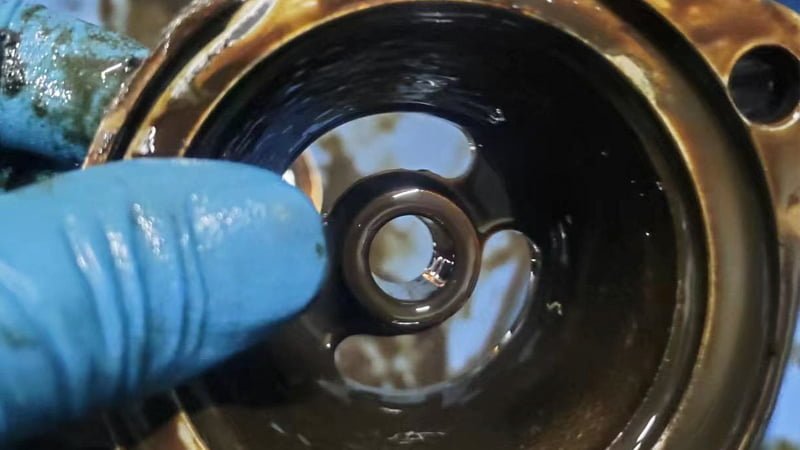
This is the simple diagnostic trick that separates an operational issue from a mechanical failure. The oil mist and spray we've been discussing are a result of the pump's compression cycle—they physically cannot happen when the pump is turned off. A true leak is a failure of a seal, which will allow oil to seep out due to gravity, regardless of whether the pump is running or not. Look for drips forming on the bottom of the pump body, especially under the main drive shaft or around the drain plug.
What's the definitive test to diagnose the issue?
You're ready to solve this problem once and for all. You need a simple, foolproof test that will tell you exactly what kind of problem you have.
The definitive diagnostic is the "clean cardboard test." It's a simple, methodical process of elimination that will tell you in minutes whether you have a dynamic operational issue or a static mechanical leak.
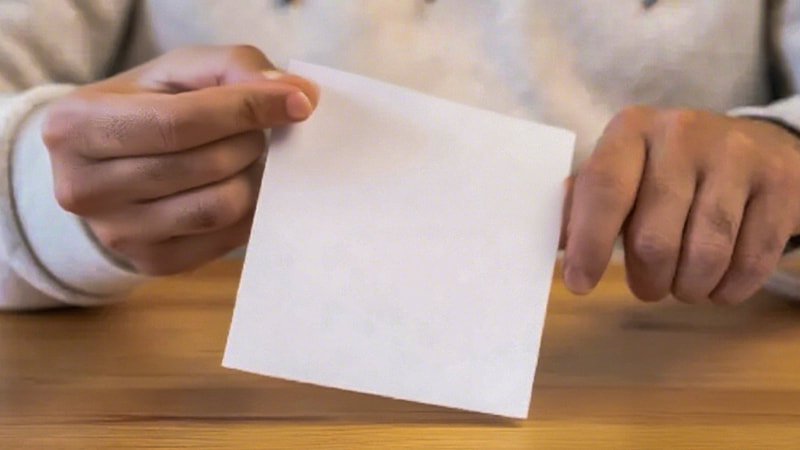
Here is the exact procedure I use. It's simple, requires no special tools, and gives you a clear answer.
- Turn the pump off.
- Thoroughly clean all the excess oil from the entire pump housing and the floor or bench around it.
- Place a fresh, clean piece of cardboard directly under the pump.
- Do not turn the pump on. Let it sit for at least one hour, or even overnight.
- Inspect the cardboard.
| Cardboard Condition | Diagnosis | What to Do Next |
|---|---|---|
| Cardboard is clean. | No mechanical leak. | Your issue is operational (oil level, filter, high gas load). |
| Fresh oil drips are present. | You have a real mechanical leak. | Identify the drip source (shaft seal, gasket, plug) and schedule a repair. |
This test removes all guesswork. If oil appears without the pump running, you have a failed seal. If the cardboard stays clean, your problem is related to the pump's operation.
Final Thoughts
Most "leaks" from the exhaust are actually just symptoms of overfilling or a clogged filter. A true leak comes from a failed seal and will drip oil even when the pump is off.


